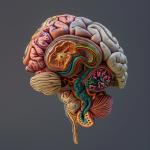The World Memory Championships is the Olympics equivalent of memory sports. Every year only the best memory athletes represent their country to compete in 10 memory categories. It is an authorised competition of memory sports in which competitors memorise as much information as possible within a period of time. The championship has taken place yearly since 1991, with the exception of 1992. It was originated by the late Tony Buzan and co-founded by Tony Buzan and Ray Keene. It continues to be organised by the World Memory Sports Council (WMSC).
The World Championships consist of 10 various disciplines, where the memory competitors have to memorise as much as they can in a period of time. In the 3-day event, memory competitors competed in adult, junior, kids and seniors categories. The ten disciplines listed below:
- One hour numbers.
- 5-minute numbers.
- Spoken numbers, read out one per second.
- 30-minute binary digits.
- One hour playing cards.
- 15-minute random lists of words.
- 15-minute names and faces.
- 5-minute historic date.
- 15-minute abstract images.
- Speed cards.
Sancy Suraj represented Singapore at the World Memory Championships in 2011 in Guangzhou, China. There he memorized, 176 abstract images in 15 minutes, 98 words in 15 minutes, 480 numbers in 60 minutes, 51 names, and faces in 15 minutes, 460 binary digits in 30 minutes.
“I enjoyed my time there very much. I got to meet guys like Dominic O’ Brien and Tony Buzan. Tony Buzan was especially nice to me. His was the first book I read about memory techniques. So it was pretty cool meeting him,” Sancy Said.
Most memory contestants, including Sancy Suraj himself, claim to have just average memories, and scientific testing confirms that they’re not just modest. Their memory feats are based on memory techniques that learned on how the human brain effectively encodes information. “Anyone can learn them,” Sancy claims.
Psychologists and neuroscientist recently wondered if the memory contestants’ brains were different in some way. The scientific researchers put the memory competitors and a group of control subjects into an MRI machine. They asked these memory athletes to perform several different memory experiments while their brains were being scanned. When it came to memorising sequences of three-digit numbers, the distinction between the memory athletes and the control subjects was, as expected, tremendous. Though, when these memory athletes were shown photographs of magnified snowflakes, images that the competitors had never tried to memorise before, the champions did no better than the control group. When the researchers analysed the brain scans, they found that the memory champs were activating some brain regions that were distinct from those the control subjects were using. These regions, which involved the right posterior hippocampus, are known to be included in visual memory and spatial navigation.
“It is all about learning the techniques, applying and practising it. Anyone can memorise like how professional memory athlete memorises, all you need are the right techniques,” Says Sancy Suraj.



























